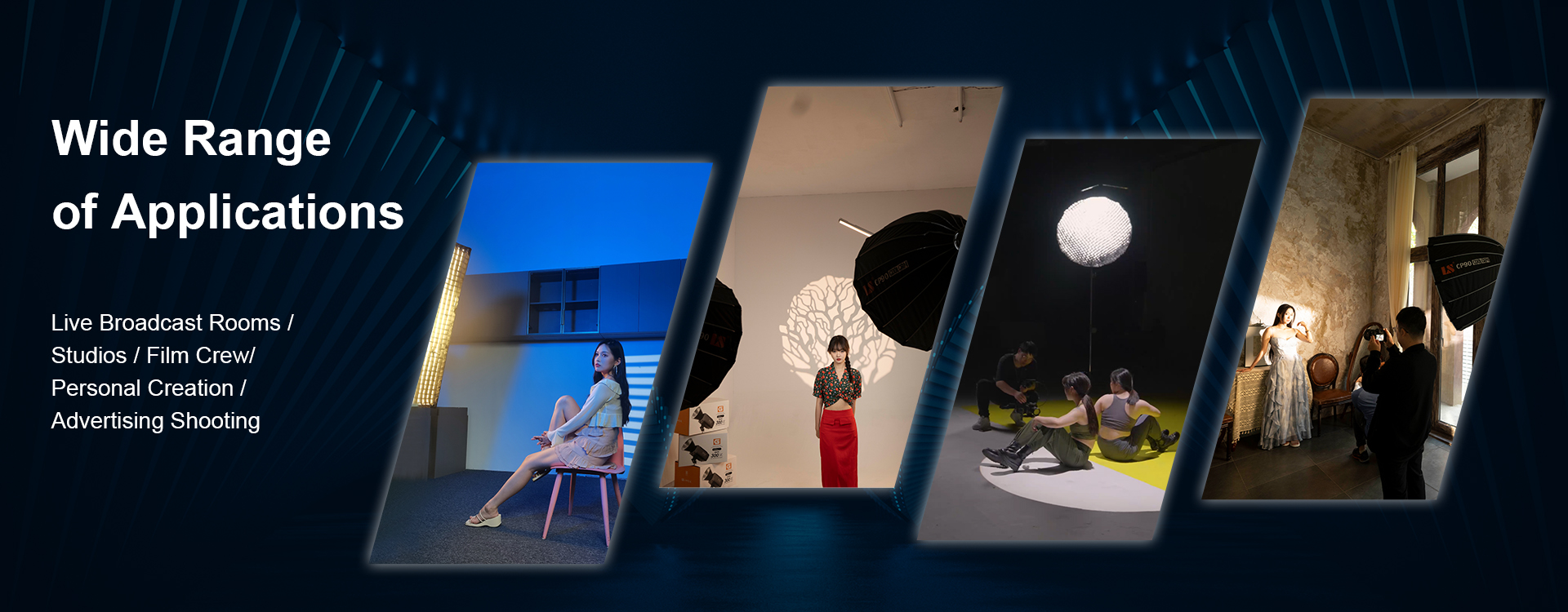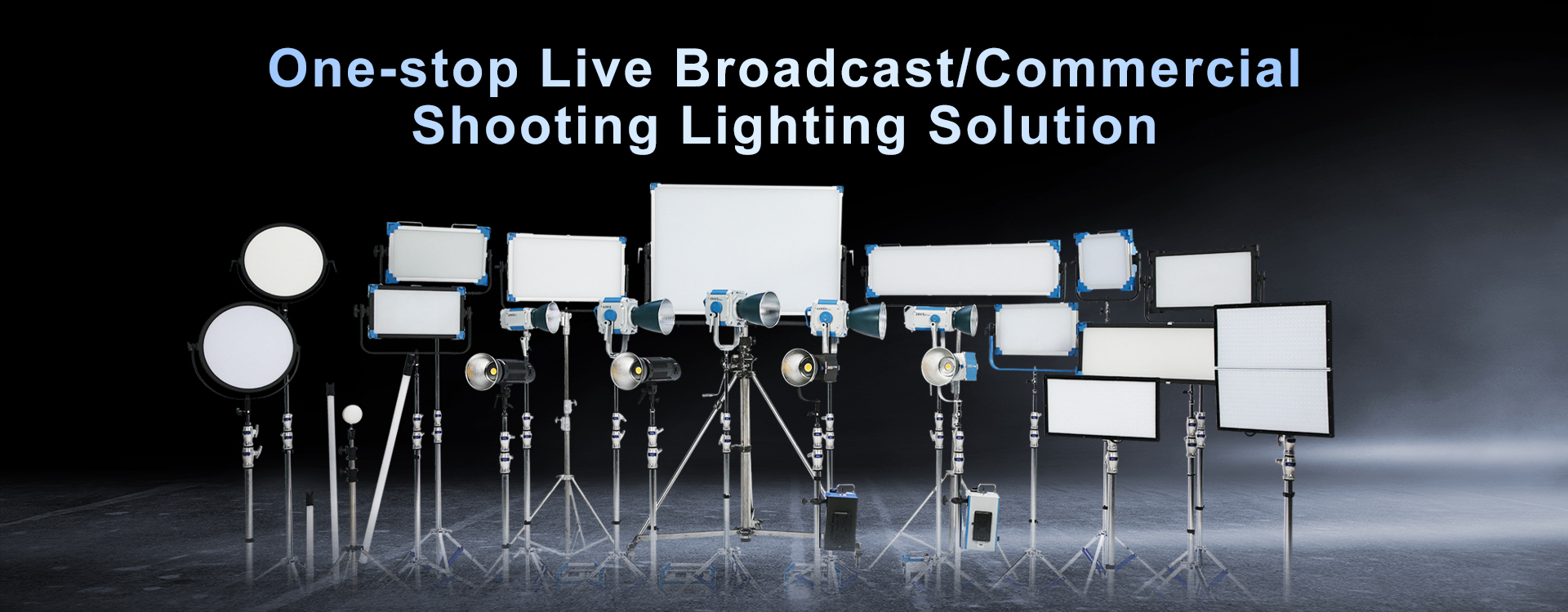

In the realm of live broadcasts and commercial shooting, high-quality lighting is an essential element that can make or break the final outcome. Whether it’s a live-streamed event, a product photoshoot, or a high-stakes commercial video, the right lighting can enhance image quality, convey mood, and engage viewers. With the advent of one-stop lighting solutions, production teams can now access a complete set of tools and technologies designed to deliver optimal lighting for every scenario. This guide explores what a one-stop lighting solution entails, the benefits it offers, and how it can elevate your live broadcasts and commercial shoots to a new level of professionalism and quality.
A one-stop lighting solution provides everything you need for lighting a scene, from basic equipment like lights and stands to more advanced items like diffusers, modifiers, and control systems. The solution is designed to be comprehensive, addressing various aspects of lighting, such as brightness, color temperature, and positioning, all within a single package or setup.
The "one-stop" concept means you don't have to seek out multiple suppliers or piece together different systems. Instead, you get a cohesive and integrated lighting system that works seamlessly to meet the specific demands of live broadcasting or commercial shooting. These solutions are often customizable, enabling you to select options that align with your unique project needs, whether it's for a small studio setup or a large-scale commercial shoot.
A complete lighting solution typically includes a variety of components that work together to deliver high-quality lighting. Here's a breakdown of the essential elements:
At the core of any lighting solution are the lighting fixtures themselves. For live broadcasting and commercial shooting, you can choose from different types:
Modifiers help control the direction and quality of light, while diffusers soften the light, creating a more natural effect. Common modifiers include:
Many one-stop solutions come with lighting control systems that allow you to adjust brightness, color temperature, and other settings remotely. These systems may include:
To achieve the perfect lighting angles, it’s crucial to have reliable stands and mounting equipment. These include:
Reliable power is essential for uninterrupted shooting, especially in live broadcasts. A one-stop lighting solution often includes power sources and backup batteries to ensure that the lights stay on throughout the shoot.
For on-the-go productions, a one-stop solution often includes portable cases and bags to easily transport lighting equipment. These cases are designed to be durable and protect your gear from damage during transit.
By opting for a one-stop lighting solution, you gain several advantages that make the investment worthwhile. Here are the key benefits:
A comprehensive lighting solution simplifies setup and operation by providing all necessary components in a single package. With everything designed to work together, you save time and effort, making it easier to set up, adjust, and operate your lighting.
With a cohesive system, you can expect consistent lighting quality across all your shoots. Consistency is crucial for maintaining a professional look and ensuring that your footage or photos meet industry standards.
One-stop solutions are designed to be versatile, allowing you to adapt the setup for various shooting scenarios. Whether you’re shooting a live broadcast, a product commercial, or an on-location interview, the equipment can be configured to meet your specific needs.
Although the initial cost of a one-stop solution may seem high, it’s often more cost-effective than purchasing individual components from different suppliers. Additionally, because the equipment is designed to work together, you minimize compatibility issues and reduce the risk of purchasing redundant items.
Having a complete lighting solution empowers you to experiment with different styles and effects. With control over brightness, color temperature, and angle, you can create the perfect ambiance and highlight the unique aspects of your subject.
Selecting the best one-stop lighting solution depends on your specific needs and the type of content you produce. Here are some tips to guide your decision:
For large-scale commercial shoots, opt for a solution that includes multiple lights and advanced control systems. Smaller setups, such as single-subject live broadcasts or product photography, can benefit from a more compact and portable system.
One-stop solutions vary in price, so it’s essential to establish a budget before shopping. While high-end systems offer more features, there are also affordable options that provide excellent quality for smaller projects.
If you require precision control over your lighting, look for systems that offer smart features like wireless control or app integration. This will make it easier to adjust settings on the fly and can add convenience to your workflow.
For those who often work on location, a solution that includes portable cases or compact components is a must. Make sure the system is easy to transport and quick to set up and take down.
Investing in high-quality equipment ensures longevity and better performance. Look for robust construction and reliable warranties, as these are indicators of a well-made product.
Once you’ve selected a one-stop lighting solution, you can maximize its potential with the following tips:
Try different lighting angles and positions to see how they affect your shots. Use boom arms and C-Stands to create dynamic lighting that emphasizes your subject’s best features.
To reduce harsh shadows and achieve a more natural look, experiment with diffusers. Soft lighting works especially well for interviews, close-ups, and commercial shoots where the subject's appearance is paramount.
With LED lights, you can easily adjust color temperature to suit the mood of your shot. Use cooler tones for a crisp, modern look, and warmer tones for a cozy, inviting feel.
Reflectors can help fill in shadows and add depth to your subject. Experiment with different colors to see how they affect the final image, and position them strategically to enhance your scene.
A one-stop lighting solution is a powerful tool for live broadcasts and commercial shoots, providing everything you need to achieve professional-quality lighting. By investing in a comprehensive system, you gain versatility, convenience, and control over your lighting setup. With the right solution, you can produce stunning content that captivates your audience and elevates your brand's visual appeal. Whether you’re a seasoned professional or a newcomer to the field, a one-stop lighting solution is an invaluable asset that will enhance your productions and help you achieve the best results.
Email format error
Email cannot be empty
Email already exists
6-20 characters(letters plus numbers only)
The password is inconsistent
Email format error
Email cannot be empty
Email does not exist
6-20 characters(letters plus numbers only)
The password is inconsistent